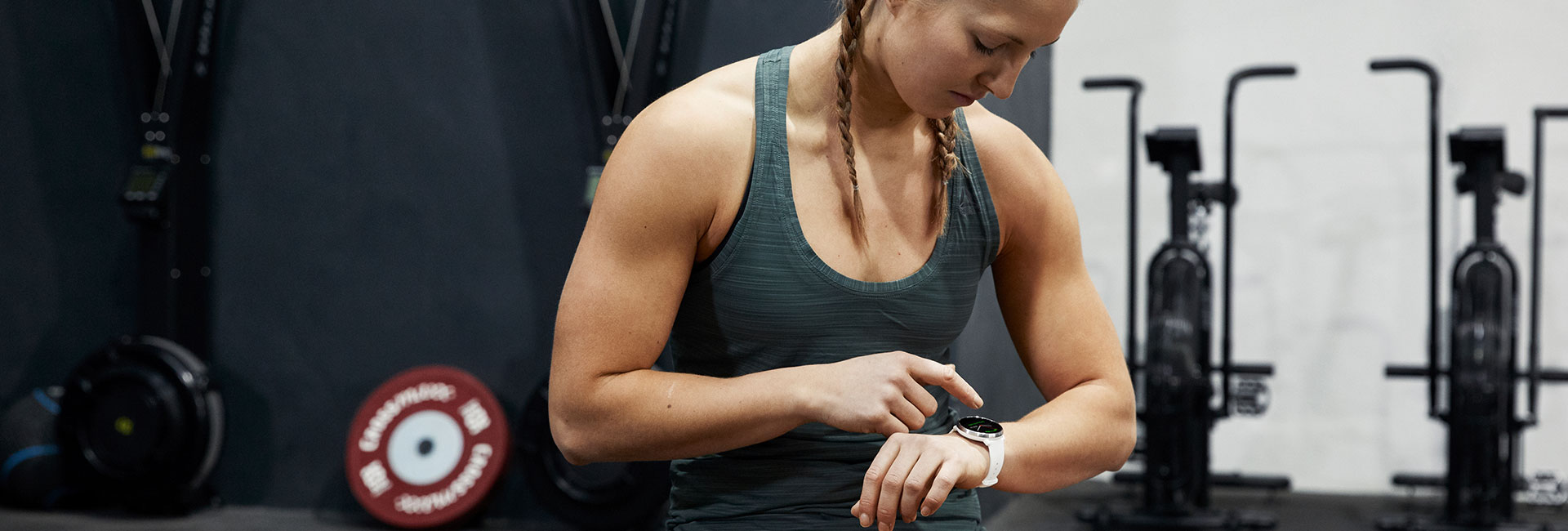When you hear the word ‘recovery’, you probably picture yourself relaxing in bed or chilling on the couch. In fact, we usually see it as such a passive process that the idea of ‘active recovery’ sounds like an oxymoron.
While recovery is a vital part of exercising, it doesn’t always mean total inactivity. There are days when passive rest is what your body needs but sometimes taking a more active approach is the best way to boost your recovery.
So, what is active recovery, why is it important and when should we try it?
Here’s the low-down on the active recovery essentials from Polar Ambassador, Brooke Turner.
WHAT IS ACTIVE RECOVERY?
If you’re wondering what does active recovery mean, then first think about how you would normally spend a rest day. Usually, this would consist of ‘passive recovery’ – a day of complete relaxation without any physical activity.
In contrast, an active recovery definition would include low-intensity exercise that promotes blood flow to the muscles, helping them to recover better and faster.
So what does active recovery do? By moving your body you’re in fact speeding up the recovery process, but here’s the catch: you need to be active enough to increase blood flow, but gentle enough to allow your muscles to heal.
On active recovery days, you should pay attention to your breathing and make sure you choose a form of exercise that optimizes active recovery. This means finishing each of these sessions feeling refreshed, energized, and ready for the next day’s training.
WHEN SHOULD YOU DO ACTIVE RECOVERY?
Science has suggested that actively moving at a low level the day after a harder intensity effort stimulates blood flow and pushes lactate and other waste away from the muscle, helping accelerate recovery.
Mary Johnson
After running a marathon, you probably think you should spend the whole next day chilling, right? Surprisingly, it’s better to do active recovery training than nothing.
Active recovery is not just for long-distance runners. Anyone who has done a heavy workout, competed in an athletic event, or simply pushed themselves to the max should balance this with a light workout the next day.
Simply put, if you find yourself wondering ‘should I do active recovery?’ after an intense day, then the answer probably is yes. Resist the temptation to do nothing and instead, try a short, light session the next day.
WHY IS ACTIVE RECOVERY IMPORTANT?
So, why do active recovery? In short, it will help your body to respond to the intense level of physical exertion you did the day before.
Think about all the pressure you placed on your joints, muscles, and connective tissues. A light workout the following day will actually help to alleviate this stress and actually help your muscles strengthen in response.
The benefits actually go much deeper than this. How does active recovery help muscles, you may ask? Well, let’s talk about lactic acid. This is the pesky byproduct of energy being made from glucose. The build-up of lactic acid often contributes to post-exercise stiffness and discomfort.
By doing light exercise the day after a big workout or competition, you flush this lactic acid from your muscles, reducing its build-up. If you usually feel all achy the next day, then getting active is the best thing for it.
Sometimes athletes are afraid to admit they are tired and then just get more tired by not taking rest days or opting for intense training when active recovery would be the smart option.
Tim Don
Active recovery also helps your muscles and joints by promoting more blood flow to them, which reduces the risk of inflammation. It also generally increases your cardiovascular fitness and endurance through working in aerobic training zones.
When considering how important is active recovery, you should also think about your mental as well as physical health. Although you may feel like you’re lacking in energy, light exercise will in fact help you avoid post-exercise fatigue from heavy training, which in turn will help improve your mood.
WHEN SHOULD YOU TAKE A REST DAY?
Even though the benefits of active recovery are clear, passive recovery is also important. Listen to your body and recognize when a day off (or two) is necessary.
If you have been injured or are at risk of an injury, it may be appropriate to let your body recover before attempting light exercise again. Otherwise, you may end up having to take even more time off from your training if you don’t listen to your body.
HOW TO DO ACTIVE RECOVERY
When creating your training plan, you should always factor in active recovery days. Think about how many intense workouts you have planned and follow these with an active recovery day. It’s less a question of ‘how many active recovery days a week?’ and more about striking balance with everything else you have in your training plan.
How long should active recovery be? In a nutshell, it should prepare your body for its next training day without causing fatigue. So, something light and easy that gets your blood flowing but doesn’t last long enough to exhaust you.
Your active recovery days should aim to:
- Elevate your heart rate and help you break a sweat – without the additional joint stress that comes with traditional cardio or HIIT workouts.
- Promote additional blood flow to sore or stiff areas.
- Prioritize unilateral and/or isometric movements.
- Address common problematic areas, such as poor thoracic mobility, bad ankle mobility, tight hip flexors, and weak core or glutes.
TYPES OF ACTIVE RECOVERY
Depending on your fitness level and available time, your active recovery session could last anywhere between 15 to 40 minutes. The great thing about active recovery is that it doesn’t have to be a structured training session – it’s more about making movement a daily, long-term, healthy habit. Here are a few ways you could include an active recovery session in your training plan.
STEADY-STATE OR NON-IMPACT CARDIO
This can be a low-intensity session on a treadmill, cross trainer, rower, road, or stationary bike with the aim to keep your heart rate between 120-140bpm (nothing too intense). Low-intensity, steady-state cardio is great for both muscle recovery but also for promoting fat use for fuel through utilizing our aerobic energy systems.
During the next few days after a race, I do some easy activity to keep the system running. A week after a race, I start to include more active stuff, like e-mountain biking or hiking. This is important for both physical and mental recovery.
Sebastian Kienle
STEADY INTERVALS & LIGHT RESISTANCE
Combining steadier state intervals in the form of no impact cardio with bodyweight resistance exercises helps to promote blood flow to muscles and joints without being too taxing on the body. This is not a workout for increasing work capacity, strength, or performance. It is a light session to help speed recovery. Try a steady easy three-minute row or ride for two rounds, then follow it with three rounds of the following, 40 seconds on, 20 seconds off:
- Walking lunge
- Push-ups
- Extended plank with shoulder taps
YOGA
Yoga lengthens our muscles and tendons, aids in their recovery, and helps our body develop better mobility and flexibility. Opt for a more gentle, restorative form such as Hatha or Yin, or try your local BodyBalance class.
STRETCHING
If yoga isn’t your thing, some simple stretching drills will help support your body and activate your recovery the day after a long run or intense workout. Try these supportive exercises from running coach Nick Anderson.
LIGHT-RESISTANCE TRAINING
Here you can use light weights or just bodyweight movements incorporated into a low-moderate circuit. Try this active recovery plan from coach Mary Johnson.
MOBILITY, HIP, AND CORE ACTIVATION
Dynamic stretching and mobility work helps prepare our body for the stressors of strength training and assists in injury prevention and flexibility. Try these hip mobility exercises from strength coach Jack Hanrahan.
SELF-MYOFASCIAL RELEASE
Foam rolling and trigger point therapies are ideal to massage inflamed and overtaxed muscles helping to alleviate muscle soreness by increasing blood flow to the area. This is great for active recovery, but do ensure appropriate hydration.
SWIMMING
A common recovery mistake is not doing anything at all. To speed up recovery the day after a race, you want to keep the body moving. I often find a light gentle swim or spin on the bike really helps.
Lucy Charles-Barclay
Doing laps is a great form of active recovery. Not only does swimming allow your body to stretch in every direction but the water is low-impact, so you can cruise through the water without stressing out your joints or muscles. It’s also a great way to not push yourself too hard – simply focus on your breathing and take it easy.
CYCLING
A recovery ride can loosen up sore muscles from your intense workouts or epic runs and still give you a gentle cardio boost. You can either try a stationary bike as suggested above or jump on your outdoor bike for a gentle cycle. Try this recovery ride workout when you’re ready to get on two wheels.
WALKING
The simplest way to get up and activate your recovery is to simply go for a walk. When all other options just feel a little too out of reach, a 30-minute walk will still make a big difference. You can take a friend and have a chat or go on your own for some vital self-reflection time. If you’re keen to get the blood pumping a little, choose a route with a hill to push your heart rate into the next zone for a moment. Don’t forget to stop at the top and breathe in the view.
Using the Polar Ignite fitness watch? Then you don’t have to think about what to do on your active recovery days. Just let your FitSpark daily training guide suggest a suitable Supportive Training Workout for you.
If you liked this post, don’t forget to share so that others can find it, too.
Or give it a thumbs up!
I like this article
Please note that the information provided in the Polar Blog articles cannot replace individual advice from health professionals. Please consult your physician before starting a new fitness program.





